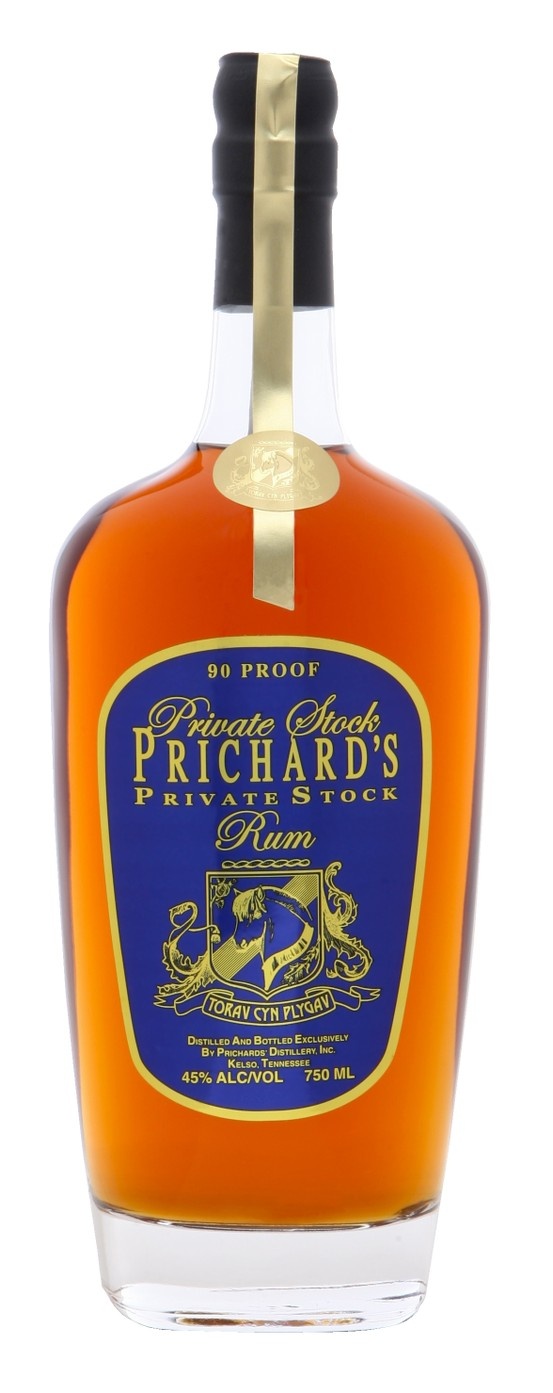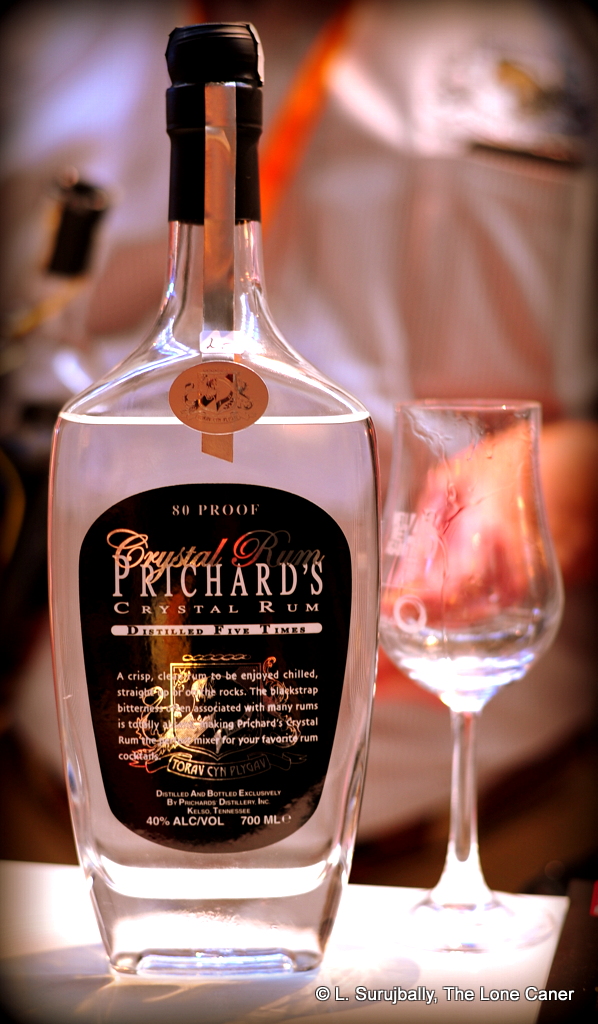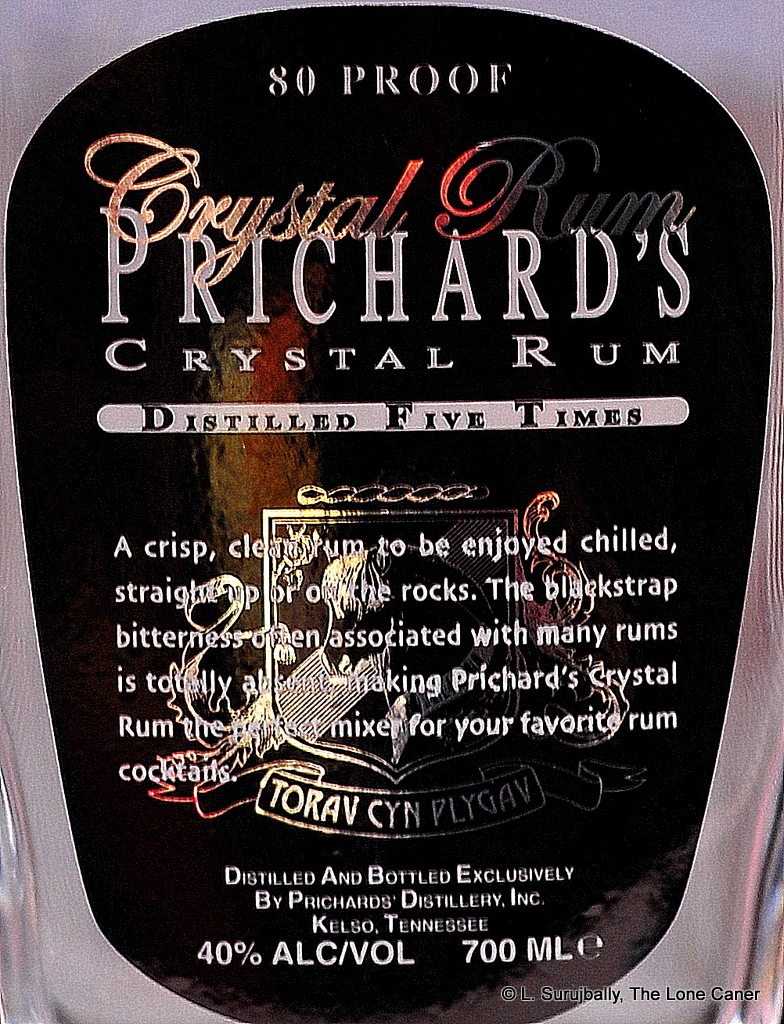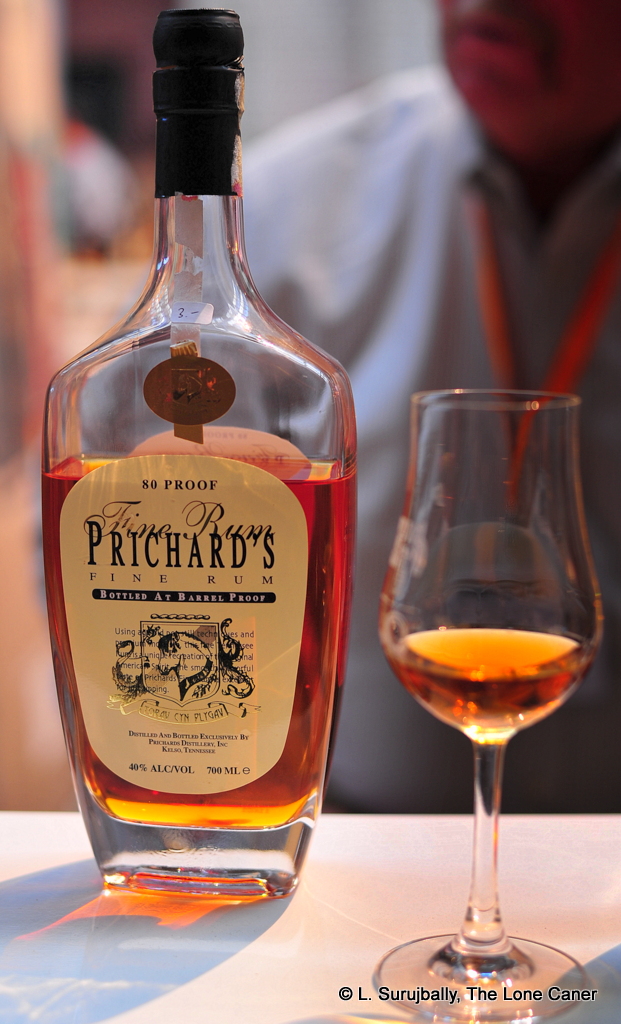
Photo copyright Prichards Distillery
I’ve given Prichards somewhat of a bruising with my indifferent reviews of the Fine and the Crystal, but let me assure you that the Private Stock is quite a leap forward: because while the others were essays in the craft, this one got it absolutely right.
Prichard’s company website entry for their own supposed top-of-the-line rum is massively unforthcoming, if not outright unhelpful. I mean, here’s a rum I want to write about with enthusiasm and knowledge so as to inform the readers, share my wonder, and yet a key data point is missing – how old is the thing?
Perhaps I should be grateful that we do have the following: pot still rum, made from the same Louisiana Grade A Fancy molasses as the other Prichard rums, in an effort to recreate the colonial style of rums as they were made back in the day; aged in charred 15-gallon new white oak barrels; and ⅔ lossses to the angels were sustained. Based purely on these facts and the way it tasted, I’m going out on a limb until Prichards responds to me, and suggest the rum is a ten-to-fifteen year old. Oh, and it has a nifty bottle quite different from the other rums in the lineup, again to separate it from the crowd.
And separated out it should be, because while none of the lingering suspicions I have about them loving bourbon more than rum have been allayed, I put all such notions aside: things started swimmingly from the moment I poured the amber rum into a glass and took a snoot.
It had a billowing, solid, fruity nose. Again that cheese and crackers scent I seemed to find in all three Prichards tried so far (and that’s a brie, by the way, not a cheddar); warm and easy-going, with the 45% strength well tamed. The molasses were held in check and presented as a burnt sugar and light anise smell, not anything raw and unrefined; sugary notes emerged, vanillas (again, quite restrained), with some unidentified fleshy ripe fruits lurking, unidentified, in the background. Raisins, maybe, and some dark ripe cherries.
I liked the taste as well. It was warm but not hot, powerful as the contents of a Transformer’s trousers, smooth and very well balanced. Here the fruits that the nose suggested were allowed to shine – blackcurrants, blackberries dusted with sugar and doused with the slightest bit of zest; and also plums, dates, figs, cinnamon, rosemary…with smoke, and leather and oak flexing their biceps at the back end, without trying to take over the joint. Complexity and balance which the Fine (and the Silver) had failed to do, were achieved with grace here. And the finish did not disappoint – the 45% was really the right choice for the Private Stock, and while there was nothing new to introduce in terms of taste and scent and last lingering notes, the aforementioned harmonies did not tear themselves to shreds and go off the reservation, but died with a sort of slow voluptuous sigh that left you with great memories and the desire for another sip.
The curious thing about the Private Stock is that it is being released in really limited quantities and not at all in retail or online stores – if you want this thing, you have to go to the distillery to get it, and therefore I envy people like Jared (he shared a comment or two on FB with me about Prichards, thanks mate), who lives down the road from the joint and can go get some whenever he feels the need. I don’t know what’s behind that strategy, but if they were to release this on the open market, they might have to put up a sign saying “Only one per customer, please.”
Over the years, I have not had that many rums from US producers that enthralled me, and to some extent that has made me somewhat cynical about what is being made over there (not least the stubborn fixation with 40%). We are so accustomed to industrial American rums that exist only as middling-quality liquid conduits for social diversion, that it comes as something of a shock – a pleasant one to be sure – to find one in which the simplicity of its construction, the balance of its components and the tastiness of its content, makes a statement for itself. That’s no small feat, and is the reason why I think it’s a really excellent product, deserving an unqualified recommendation. This rum will give other craft makers a real run for their money. It’s that good.
(#221. 86/100)
Afterword: As I was editing this review for final posting, I lost patience with emails, picked up the phone and called Prichards directly, probably waking somebody up in the process: the very pleasant lady who answered told me without any waffling around that the Private Stock is a blend of rums aged 12-14 years.


